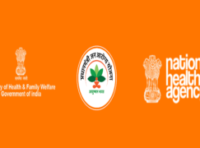NITI was formed on the 1st of January 2015 by a resolution taken by the Union Cabinet ministers. The idea was to replace the Planning Commission with better machinery of policymaking and hence NITI came into existence. The main focus of NITI is sustainable development through effective policymaking and technological advancement with the aim of economic growth in the country. The NITI works as a ‘think-tank’ for the development of the nation. The ‘bottom-up’ principle has been followed here which is focussed on efficient governance and cooperative federalism.
Features
The administrative structure of NITI Aayog is headed by the Chairperson who is the Prime Minister of India. It also has a Governing Council and a Regional Council as essential instruments for planning & execution.
There are two ‘hubs’ in the NITI Aayog system, namely the ‘Team India Hub’ which is associated with the State and Centre cooperation and participation for its programs; and the other one is the ‘Knowledge and Innovation Hub’ which is essentially the ‘think-tank’ of the NITI structure.
It promotes the ideals of cooperative federalism and is a step towards the decentralization of policy planning and implementation.
Some of the schemes that have been announced under NITI Aayog are Lucky Grahak Yojana, Digi Dhan Vyapari Yojana, and Pradhan Mantri Annadata Aay Sanrakshan Abhiyan (PM-AASHA).
Objective
- To promote cooperative federalism.
- To help the economic growth of the nation which includes national security concerns as a priority.
- To uplift the marginalized sections of society.
- To encourage sustainable development in villages and urban areas.
- To empower women through various schemes and programs.
- To facilitate entrepreneurial activities in the nation.
- To help spread digitalization and technological advancement in the country.


![[Apply] MEITY Cyber Surakshit Bharat Training Calendar, Course List, Online Nomination Process, Registration Dates | Digital India Training Management Information System](https://sarkariyojanas.com/wp-content/uploads/2021/07/Cyber-Surakshit-Bharat-840x560.jpg)





